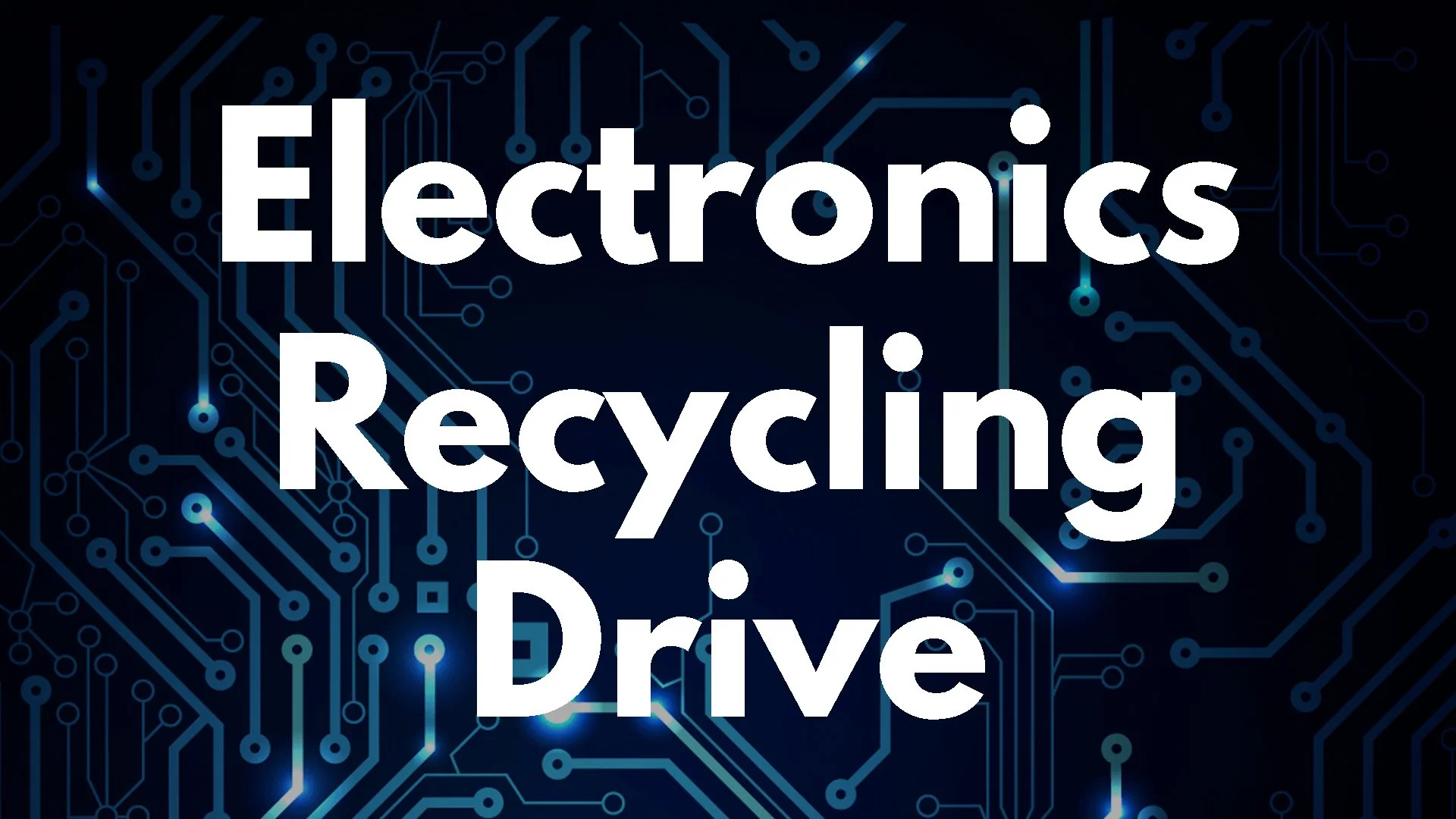Recycling Programs
Electronics Recycling Drive
Each January, Arapaho UMC hosts an Electronics Recycling Drive
WHAT CAN YOU DONATE?
Computers
Desktops, laptops, servers, LCD monitors, keyboards, mice, speakers, and all other computer components.
Cameras
Camcorders and all non-disposable film and digital cameras.
Office Equipment
Fax machines, typewriters, inkjet cartridges, printers, scanners, routers, shredders, and copiers.
Entertainment Electronics
Car and home audio equipment, satellite and cable boxes, VCRs, DVD players and recorders, headphones, and multimedia projectors.
Multimedia
DVD and VHS movies, audiobooks, and music CDs. All multimedia items must include original covers.
Portable Electronics
Cell phones, GPS devices, calculators, portable CD and DVD players, PDAs, and MP3 Players.
Video Games
Video games, systems, and accessories.
Sporting Goods
Golf clubs and bags, athletic helmets and pads, baseball bats and gloves, basketball shoes, cleats, hockey sticks, ice skates, and roller blades.
Musical Instruments
Guitars, percussion, strings, woodwinds, brass, and electric keyboards.
Home and Garden
Air purifiers, baby monitors, vacuum cleaners, power tools, electric razors, sewing machines, and medical equipment.
Items may be in any condition – damaged, non-working, or fully operational.
HOW TO PROTECT YOUR IDENTITY
While our recycler has the practice (and a good track record) of wiping systems they repurpose/recycle, there is an ever-changing set of people in the refurbish/deconstruction chains. I would not trust it for highly sensitive info even with the best of intentions, practices, and track records. Having the items in an open bin and unsecured storage while at the church poses some additional risk.
Here are some things that can be done:
If you understand the encryption schemes available on you computer and have implemented them with robust passwords, it could be sufficient to simply delete the sensitive files and accounts since the files would remain encrypted even if pieced back together later with a recovery tool. Unfortunately this capability has evolved with the operating systems and it's not as simple as it once was to figure out (for each OS version) how to use this reliably for all user data on a disk.
Otherwise, at a minimum, I'd delete any sensitive files with a file shredder app followed by an optional factory reset/recovery - if it's a laptop or other system that offers that feature.
Another option is to use a disk wiping app to blank the drive in an unrecoverable manner. Usually you must install the app on a CD or usb thumb drive to wipe the main/boot drive on a computer. Here are somewhat more straightforward disk wiping instructions from the Geek Squad folks using the common DBAN program.
The last option is to remove the drive(s) from the system and keep or physically destroy them.
Smart phones and other devices with flash storage rather than hard disk drives usually offer a factory reset that should be utilized to clear out contact, message, photos, or account info. Should also delete the devices from any service provider accounts they may still be associated with.
